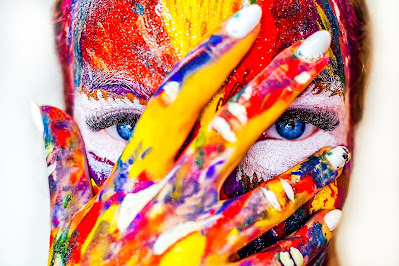There are many potential challenges and barriers to staying connected to our creative selves and following our creative path. The good news is that we can develop inner and outer support systems, catalyse challenges and build creative resilience.
1. Inner Support
We all come into the world innately curious, playful and creative. As we mature, however, socialization can impact our sense of our creative agency. For example, we may have been told that being creative is not a proper job, or that big boys don’t cry and do expressive things like dancing. We internalize many of these messages as the voice of our inner critic, which can oppress our creative voice, especially when it appears we are breaking received messages or social norms.
So finding our creative voice can involve the inner work of excavation and liberation from limiting conditioning - examining the messages we received and consciously deciding whether we wish to continue running these narratives or change things up. We can commit to listening to our creative voice and championing our own creativity, come what may.
This foundational work may not be easy but it brings so many rewards – including the empowerment to live a fulfilling, creative life.
2. Creative Community
Our creative voice flourishes when accompanied by close connections with those who will encourage, inspire and share our creative pathway. The more we value our creativity, the more people we will attract who value our creativity. This can include mentors, friends, collaborators, masterminds and networks of those we trust to be positive, constructive and support of our creative endeavours. Discernment is key – it’s imperative that we protect ourselves from those who are undermining, draining, exploitative or oppressive of our creativity. Nurturing our creative community is a organic ongoing process, so our networks and circles change as we grow, and we can celebrate the fruits and attend to the lessons of our collaborations along the way.
3. Building Creative Habits
In his book Atomic Habits, James Clear shares that one of the most powerful ways to change habits is to shift our identity. When we identify ourselves as creative, we start building habits to ensure we practice and safeguard our art. Whether that’s switching off the phone whilst practising an instrument, deciding to hire a studio space to work undistracted or making daily space in our schedule for creativity. He also advocates creating an environment that supports positive habits – for example, if you want to set up a habit of flossing, leave the floss by your toothbrush. Similarly, in Organising your Creative Career, Sheila Chandra advocates having creative workstations for the different aspects of a creative life, so you can set yourself up for success.
4. Stay Tuned to Deeper Values
Underpinning our big WHY- i.e. why we make our art and how it serves our audience – are our core values. These are our cornerstones, that keep us grounded and on track. For example, if you love bringing people together in your area for events, one of your values might be community. If you are a trapeze artist, it might be freedom (to fly!) Coming back to our values regularly helps us stay tuned and prioritise what is most important to us.
5. Catalyzing Challenges Creatively
We’ve all had moments of being deeply touched by a piece of music, art or film. Creativity is a transformative process, which can powerfully liberate energy – whether that’s moving our e-motions or shifting our mindset. So when things are coming up, as they inevitably do in any creative process, it can often be a positive sign, even if it doesn’t feel like it – there may be an important lesson or wisdom to alchemise. In my creative practice, I daily witness how singing can support people facing major life challenges including bereavement, illness and caring for a loved one. The creative process catalyzes personal and professional growth and builds creative muscle as we work through challenges.
6. Play and Connect with Magic Every Day
Creativity brings a little magic to life – emerging seemingly from left field, it can be quirky, eccentric, inspiring, surreal, dreamlike – offering us an invitation to step into another perspective from our day-to-day reality. So just as our ancient ancestors devised ways to commune with the Muse, we need to set up windows of opportunity for creativity to come and visit. We can set up comforting creative rituals – such as a daily walk - and leave space for spontaneous risk-taking - taking a detour from our usual route home to see different sights. We need to be open, curious and willing to follow the prompts that arrive on the wings of dreams and butterflies.
Connecting to creativity builds resilience and inspires us to help make our world more magical, beautiful and joyful for everyone.
Over to You:
What helps you stay tuned to your creativity and build a resilient practice?
For more fascinating discussions about creativity, tune into Curious about Creativity Podcast
Stay tuned with my monthly newsletter, packed full of music, insight, poetry and podcasts about vocal creativity.




















